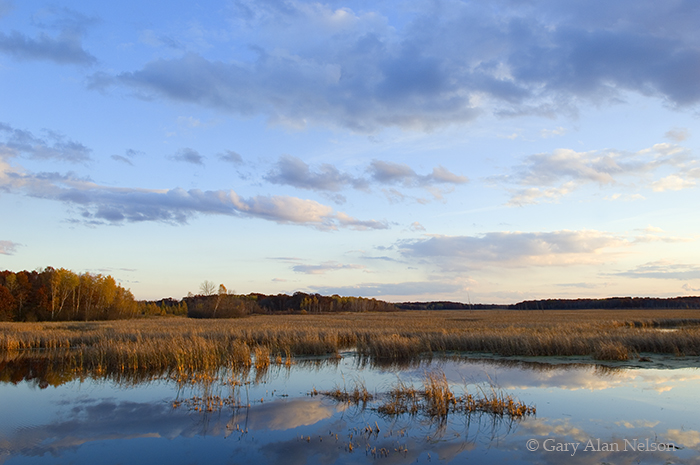Habitat
Wild rice is typically found growing on the edges in and around lakes, streams, and rivers. It tends to grow best where running water meets stagnant water. This provides the plant with high oxygen levels, or aerobic conditions, which they are proven to grow the best under. One can recognize wild rice because it looks ditinctly like a praire grass that is growing in the water, usually at depths from 2 to 5 feet. At maturity the stalks grow to an average of 5 to 8 feet above the water but can range anywhere from 2 to 10 feet tall. Though they like a muddy substrate to grow into, clear water is important because it provides light to the young plant as it grows in the deep water (Thayer 2006). To learn about why sunlight is important to the developing seedling, check out the page about nutrition. |
|
| A study done by Campiranon and Koukkari in 1977 showed that though wild rice seedlings were able to grow in conditions with relatively low oxygen levels, or anaerobic conditions, they grew much better when they had an adaquate supply of oxygen, or aerobic conditions. Oxygen is important to the health of the plant and provides a means for the plant to photosynthesize. This study reinforces the idea that they prefer areas where flowing water meets stagnant water. |
Image taken from Physiologia Plantarium published 1977. |
Image taken from http://commons.wikimedia.org |
Organisms all inhabit ecological niches. Niches describe where the organism lives and how it interacts with the species around it. Wild rice has developed its own niche in aquatic environments. With the adaptations it has made, it is able to live deeper in the water than other species like cattails, and it serves an important role in the food chain there. Read about its interactions with other species and adaptations it has made to its environment to learn more! |
Next learn about where it's geographically located.
To go back to the home page simply click the 'home' tab at the top of this page or click here


